The Jagannath Temple, located in Puri, Odisha, India, is one of the most famous and sacred Hindu temples in the country. It is dedicated to Lord Jagannath, a form of Lord Vishnu, along with his siblings, Lord Balabhadra and Goddess Subhadra. The temple is not only a place of worship but also an architectural marvel that attracts millions of devotees and tourists every year. In this extensive guide, we will explore the temple’s timings, its various rituals, and the significance of these ceremonies in the life of the people of Puri.
- Entry Fee: No entry fee
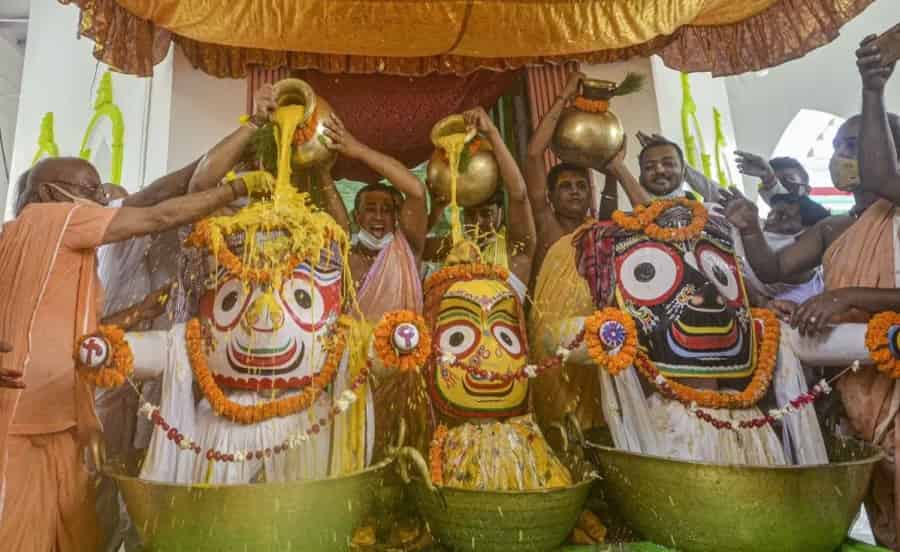
Temple Timings
The Jagannath Temple in Puri operates on a daily schedule that involves various rituals, and it opens and closes at different times throughout the day. Here are the general timings for visiting the temple:
- Morning: The temple usually opens early in the morning, around 5 AM. The morning darshan (viewing) is highly significant, and devotees often aim to be present during this time to have a glimpse of the deities. The morning rituals begin with the Mangala Aarti, which is the first form of worship offered to the deities.
- Evening: The temple reopens for the evening darshan around 7 PM. The evening rituals include the Sandhya Dhupa, which is the evening meal offered to the deities.
- The Temple Remains Closed During the Afternoon: After the morning darshan, the temple closes for a few hours in the afternoon, typically between 1 PM and 4 PM. During this time, the temple premises are cleaned, and preparations are made for the evening rituals.
Jagannath Puri Temple Darshan Timings
- Monday: 5:30 am – 9:00 pm
- Tuesday: 5:30 am – 9:00 pm
- Wednesday: 5:30 am – 9:00 pm
- Thursday: 5:30 am – 9:00 pm
- Friday: 5:30 am – 9:00 pm
- Saturday: 5:30 am – 9:00 pm
- Sunday: 5:30 am – 9:00 pm
Jagannath Puri Temple Prasad, Aarti, and Bhog Timings
- Dwarpitha and Mangal Aarati: 5:00 am
- Mailam: 6:00 am
- Abakash: 6:00 am to 6:30 am
- Mailam: 6:45 am
- Sahanamela: 7:00 am to 8:00 am
- Beshalagi: 8:00 am
- Rosha Homa, Surya Puja, and Dwarapal: 8:00 am to 8:30 am
- Gopala Ballava Puja: 9:00 am
- Sakala Dhupa (Morning food offering) and Mailam: 10:00 am
- Mailam & Bhoga Mandap (2 to 3 times a day):
- Madhyanha Dhoop (Afternoon food offering): 11:00 am to 1:00 pm
- Madhyanha Pahudha: 1:00 pm to 1:30 pm
- Sandhya Aarati: 5:30 pm
- Sandhya Dhupa: 7:00 pm to 8:00 pm
- Mailam and Chandana lagi: 8:30 pm
- Badashringara Vesha: After Chandana Lagi
- BadaShringar Laga Bhoga: 9:30 pm to 10:30 pm
- Khata Seja Lagi and Pahuda: 12:00 am (Midnight)
It’s important to note that these timings are approximate, and they may vary slightly based on specific rituals, festivals, and the time of the year.
Daily Rituals
The Jagannath Temple is known for its elaborate daily rituals and ceremonies. These rituals are an integral part of the temple’s tradition and are carried out with great devotion. Here are some of the daily rituals that take place at the temple:
- Mangala Aarti: This is the first ritual of the day. It involves waking up the deities with songs and prayers. Devotees gather to witness this ceremony, which signifies the beginning of a new day.
- Mailam: After the Mangala Aarti, the deities are adorned with new clothes. This ritual is known as “Mailam.”
- Abakash: After dressing the deities, the next ritual is called “Abakash.” During this time, devotees are allowed to have a darshan of the deities. It’s one of the most sought-after moments of the day.
- Beshalagi: “Beshalagi” is the next ritual in which the deities are adorned with special attire and jewelry. The temple’s priests carefully select the outfits and ornaments for the deities.
- Gopala Ballav Bhoga: This is the time for offering the morning bhog (food) to the deities. Devotees can make offerings to the gods and receive blessed food in return.
- Sakala Dhupa: This is the main offering of the morning, a grand feast that is presented to Lord Jagannath. It typically consists of a variety of dishes and is a significant event.
- Madhyanha Dhupa: This is the afternoon offering made to the deities. Devotees often gather for the Madhyanha Dhupa darshan.
- Sandhya Dhupa: In the evening, a similar offering of food, known as the Sandhya Dhupa, is presented to the deities.
- Badasinghara Bhoga: This is the last offering of the day, which includes fruits and sweets. It marks the end of the daily food offerings to the deities.
- Pahuda: After the evening rituals, the deities are put to rest. Devotees can witness the ceremony when the gods retire for the night.
Weekly and Monthly Rituals
In addition to the daily rituals, the Jagannath Temple also observes several weekly and monthly rituals. These are special occasions that draw even larger crowds of devotees.
- Naba Kalebara: This is a significant ritual that occurs approximately every 12 to 19 years when the deities’ bodies are changed. It is believed to bring a renewal of spiritual energy to the temple.
- Chandana Yatra: This is a 42-day long festival that occurs during April and May. It involves applying sandalwood paste to the deities, and the deities are taken on a procession to Narendra Tank.
- Anasara: During the Anasara period, the deities are kept away from public view for a few weeks. Devotees believe that the deities fall ill and need time to recover. The temple remains open, but the deities are not visible during this period.
- Rath Yatra: The Rath Yatra is one of the most famous festivals associated with the Jagannath Temple. It involves the grand procession of the deities on chariots through the streets of Puri. This event usually takes place in June or July and attracts millions of devotees.
- Chitalagi Amavasya: This is a festival that occurs on the new moon day in the month of Sravana. On this day, the deities are adorned with special golden attire.
- Chaka Aarti: During the Chaka Aarti, the temple’s flag is changed. This event marks the end of one ritual year and the beginning of another.
- Snana Yatra: Snana Yatra, also known as the Bathing Festival, is celebrated on the full moon day in the month of Jyestha. The deities are bathed in public view, and this is one of the most important festivals in the temple.
Annual Festivals and Special Occasions
The Jagannath Temple celebrates various annual festivals and special occasions with great enthusiasm and grandeur. Some of these festivals include:
- Ratha Yatra: As mentioned earlier, the Ratha Yatra is the most famous festival at the temple. It involves the pulling of colossal chariots carrying the deities through the streets of Puri. The chariots are massive and beautifully decorated, and the event attracts a massive crowd of pilgrims and tourists.
- Snana Yatra: This festival involves the ceremonial bathing of the deities with 108 pots of water. The deities are dressed in special attire for this occasion.
- Gundicha Yatra: After the Ratha Yatra, the deities are taken to the Gundicha Temple, located at a distance of about 3 kilometers from the main temple. This journey is known as the Gundicha Yatra.
- Hera Panchami: This festival is celebrated on the fifth day of the bright fortnight in the month of Asadha. It commemorates a symbolic quarrel between Goddess Lakshmi and Lord Jagannath.
- Niladri Bije: After the Ratha Yatra, the deities are taken back to the Jagannath Temple. Niladri Bije marks the return of the deities to the sanctum sanctorum.
- Anavasara: Anavasara is a period of rest for the deities after the Snana Yatra. It is believed that during this time, the deities are unwell and need to recuperate.
- Nandotsava: This festival is celebrated on the ninth day of the bright fortnight in the month of Bhadraba. It commemorates the festival of Lord Krishna’s birth.
Rules and Regulations for Devotees
Visiting the Jagannath Temple is a sacred experience, and there are certain rules and regulations that devotees are expected to follow:
- Dress Code: Devotees are required to dress modestly when entering the temple. Men are generally expected to wear dhotis, and women should wear sarees or traditional attire. Sleeveless tops, shorts, and other revealing clothing are not allowed.
- Footwear: Footwear is not allowed inside the temple premises. There are designated areas to leave your shoes or sandals before entering.
- Mobile Phones and Cameras: Using mobile phones or cameras is prohibited inside the temple.
- Non-Hindu Devotees: Non-Hindus are not allowed to enter the temple premises. The Jagannath Temple has strict rules regarding entry for non-Hindu visitors.
- Offerings: Devotees can make offerings to the deities, but it’s important to do so through the authorized channels and priests. Unsolicited offerings may not be accepted.
- Silence: Maintaining silence and offering prayers with devotion is encouraged within the temple.
Significance of the Temple and Rituals
The Jagannath Temple holds immense significance in the Hindu faith and the cultural life of Puri. The rituals and ceremonies performed here are not just religious acts but are deeply ingrained in the daily lives of the people. Here’s why the temple and its rituals are so important:
- Spiritual Connection: The temple is considered the earthly abode of Lord Jagannath, and a visit here is believed to provide spiritual fulfillment and purification of the soul.
- Community Bond: The temple rituals bring the community together. The involvement of priests, devotees, and volunteers creates a sense of unity and belonging.
- Cultural Heritage: The temple’s rituals and festivals are an integral part of Odisha’s cultural heritage. They showcase the rich traditions and art forms of the region.
- Devotional Practices: The daily rituals and festivals provide a platform for devotees to express their devotion to the deities and deepen their connection with the divine.
- Economic Impact: The temple and its associated activities contribute significantly to the local economy. Puri sees a boost in tourism and business during festivals and special occasions.
- Tourist Attraction: The temple attracts tourists from all over the world, contributing to the promotion of India’s cultural and spiritual heritage.
In conclusion, the Jagannath Temple in Puri is not only a place of worship but a living testament to the rich cultural and spiritual traditions of India. The temple’s daily, weekly, and annual rituals provide a unique opportunity for devotees to connect with the divine and participate in the vibrant tapestry of Hindu traditions. It stands as a symbol of the enduring spiritual and cultural legacy of the region, drawing people from all walks of life to seek blessings and experience the divine presence of Lord Jagannath, Lord Balabhadra, and Goddess Subhadra.

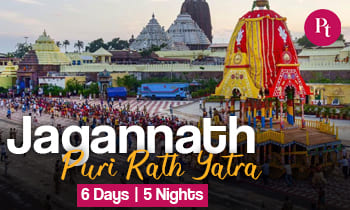
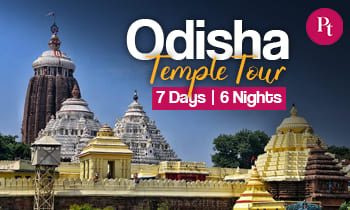
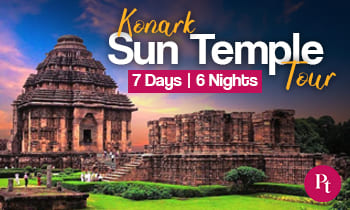
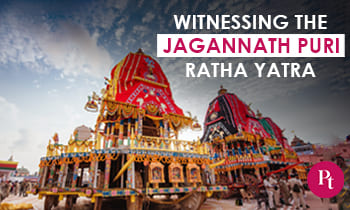
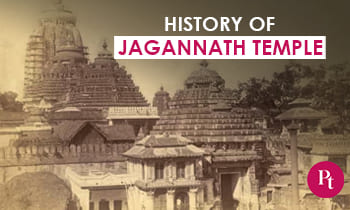
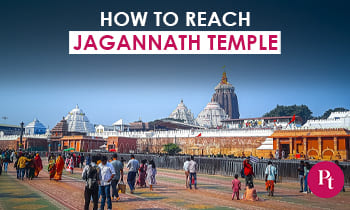
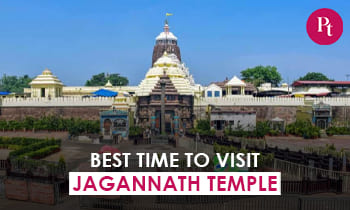

 Call
Call WhatsApp
WhatsApp Enquiry
Enquiry
Which day jagannath temple will be closed for 14 day in 2024
Special Darshan package